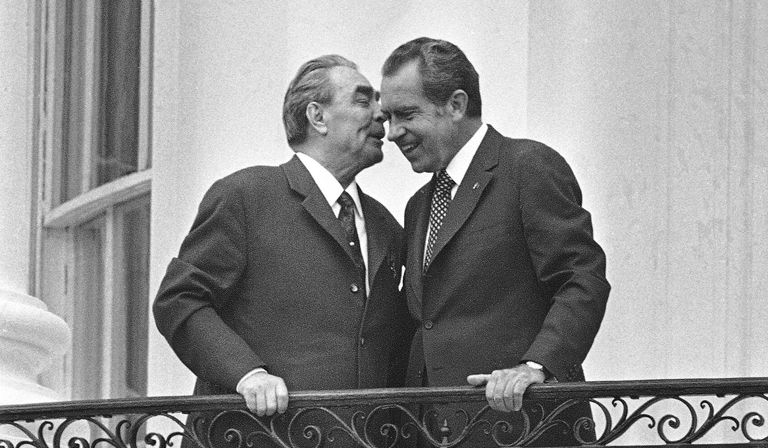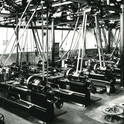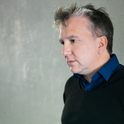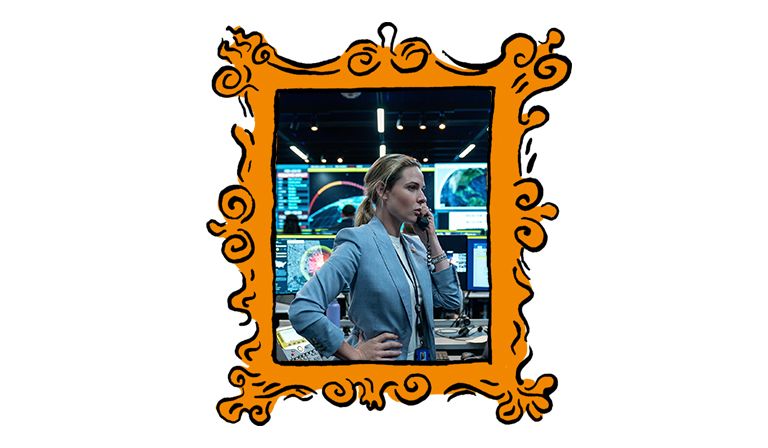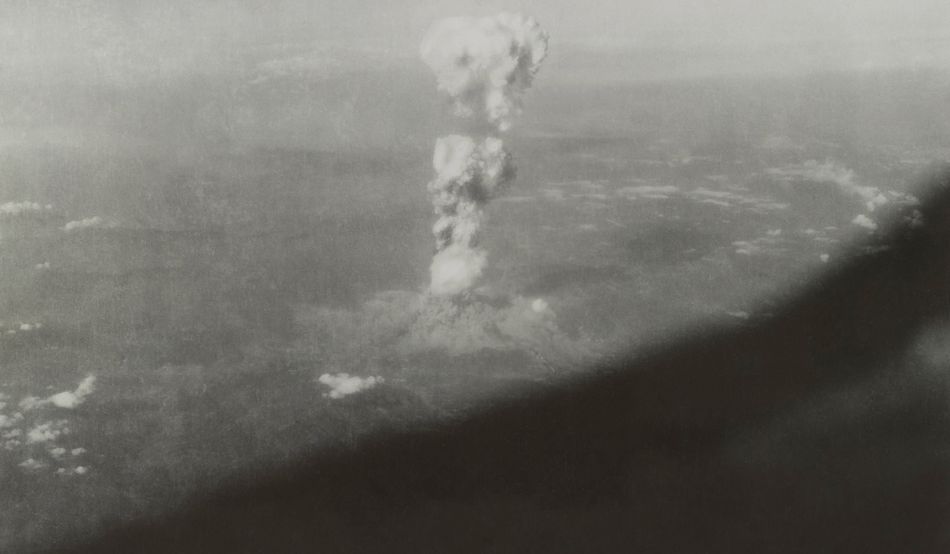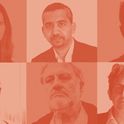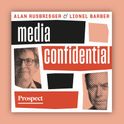Writing about nuclear war is difficult because it is easy. J Robert Oppenheimer himself, the so-called father of the atomic bomb, set the tone with his paraphrasing of the Bhagavad Gita after the Trinity Test in July 1945: “Now I am become Death, the destroyer of worlds.” Many others have followed with similarly poetic, portentous, awestruck words. So it is that mushroom clouds have a “terrible beauty” to them. Bombs fall with “merciless precision”. People yield to the “power of the universe”. Megadeaths, cataclysm, fire. There exists a readymade lexicon for anyone trying to describe the nuclear age.
In Oppenheimer’s case, he was at least reaching for a means of explaining his own tortured feelings about the detonation of the first atomic bomb—in an instant, his successful scientific project had turned into a tool for killing many people at once. In most other cases, there is something showily reverent about the way the subject is handled. This tendency reached its apogee—or nadir, depending on how you look at it—with 2023’s blockbusting Christopher Nolan biopic Oppenheimer. Here, the scientists who worked at Los Alamos are superheroes: impossibly clever, brooding, anguished and—it must be said—masculine. For all the regret in the eyes of Cillian Murphy’s Oppenheimer, there is also a glimmer of cool about his silhouette. Never once is it implied that it might be worse to be struck by an atom bomb than to make one.
It is now 80 years since Trinity and the subsequent bombings of Hiroshima, on 6th August 1945, and Nagasaki, three days later, which killed around 200,000 people and effectively brought an end to the Second World War. Accordingly, numerous books have been published or republished to mark the anniversary, from new analyses of that awful moment in Japan (Richard Overy’s Rain of Ruin and Iain MacGregor’s The Hiroshima Men) to first-hand accounts (Takashi Nagai’s The Bells of Nagasaki) to, perhaps more coincidentally, an English translation of a recent Bolivian short-story collection with a radioactive tinge (Liliana Colanzi’s You Glow in the Dark).
Thankfully, and notably, very few of these books succumb to the usual breathlessness. In fact, Serhii Plokhy’s The Nuclear Age—probably the biggest release of the lot—even seems to call it out. After quoting Bill Laurence’s contemporary New York Times report about Nagasaki—“Exploding with a blinding flash visible for miles, and a terrific roar, the new secret bomb that harnesses the power of the universe to destroy men and material…”—Plokhy observes that “one could feel a sense of excitement in his prose”. He might as well have replaced “prose” with “pants”.
Instead, Plokhy delivers the sober, serious account of the politics of the bomb—from Trinity to today—that one would expect of a professor of Ukrainian history at Harvard University. His previous book about the Chernobyl disaster is one of the most impressive nonfiction works of the past decade; the ambition of this one is no less impressive. In telling the story of how the world’s nine nuclear-armed states—the United States, Russia, the UK, France, China, India, Pakistan, North Korea and (though it doesn’t admit it) Israel—came to achieve their arsenals, and what those arsenals mean for everyone else, The Nuclear Age moves around in time and spans most of the globe. Plokhy’s aim, he writes, is to answer the question, “Is there anything we can learn from the first nuclear arms race that can help us to stop or at least control the new one?”
Seeing the facts of the nuclear age laid out on the page, shorn of any flights of fancy, carries its own propulsive force
Though it ought to be added that, in this case, “sober” and “serious” do not mean “uncompelling”. Quite the opposite. Seeing the facts of the nuclear age laid out on the page, shorn of any flights of fancy, carries its own propulsive force. And those facts will frequently leave you reeling. Describing, for example, the US programme to provide the Los Alamos scientists with the requisite radioactive material for their bomb, Plokhy writes, “In 1945 the price of 110 pounds of gold was slightly more than $61,000. By contrast, the cost of producing 110 pounds of Oak Ridge uranium-235 was well above a billion dollars.”
There is power, too, in the book’s core proposal that the bomb has both political causes and effects. Much has already been written about the latter, especially when it comes to the Cold War logic of Mutually Assured Destruction (MAD). But there exists rather less on the personal rivalries, friendships, aspirations, deals and gambits that went into the making and maintaining of each state’s arsenal. The Nuclear Age is a corrective. Its sources include parliamentary transcripts and ministers’ diaries. It emphasises, say, the significance of “two leaders [taking] an instant liking to each other” during negotiations; in this case, Richard Nixon and Leonid Brezhnev in the talks that yielded the first formal nuclear détente between the US and USSR, the Salt I Treaty of 1972.
Gosh, though, the things politicians will do to get the bomb! In the postwar UK, “the government had no money”; austerity was in full swing; food rationing was stricter than during the war itself—and yet the Labour prime minister, Clement Attlee, still wanted to fund the development of a British bomb. He effectively did so off the books, “in complete secrecy from the opposition”. When Winston Churchill returned to power in 1951, it was, in Plokhy’s words, a “complete surprise” to him that the country had a “fully developed atomic bomb project”, already consisting of two nuclear reactors and facilities for distilling the necessary isotopes of uranium and plutonium.
Similarly, the young Shimon Peres—one of the major architects of Israel’s bomb, and a future prime minister—had the “official research and development budget of the defense ministry increased more than fourteen times”, all while maintaining the official line: “Israel is not a nuclear state.” If anything supports the notion that far-reaching conspiracies exist at the very highest levels of government, then it is the history of nuclear weaponry.
What about the scientists? The Nuclear Age does not ignore foundational characters such as Oppenheimer, Niels Bohr and Leo Szilard—how could it?—but it sometimes presents them more as political advisers, weighing in on domestic and international developments where necessary, than as theorists, physicists or radiochemists. When it comes to the science itself, Plokhy does gloss over some of the trickier details, leaving them mysterious. Sentences such as “[Werner Heisenberg] considered two possible moderators, graphite and heavy water, to slow down the neutrons and enable a chain reaction” pass by without the context that would make their terms and concepts understandable to the lay reader.
But this is where Frank Close’s recent Destroyer of Worlds comes in. Close is a particle physicist who was inspired to write his latest book by two occurrences: his own experience of receiving radiotherapy for cancer, and his grandson asking about the USSR’s Tsar Bomba, which, after its test-explosion in 1961, remains the most powerful nuclear weapon ever detonated. Here were the two poles of the nuclear revolution—both its life giving and life-taking potential—and Close decided to navigate between them. “So came about this account,” he explains in the book’s acknowledgements pages, “of how the discovery of a smudge on a photographic plate in 1896 – the first hint of nuclear energy – within just seventy years gave humanity the ability to destroy itself…”
The science is relentless, and relentlessly well explained. We learn about those who first charted the subatomic realm and its possibilities, such as Ernest Rutherford (“the architect of the nuclear age”), James Chadwick and JJ Thomson. We learn about female pioneers in the field, including Marie Curie, of course, but also her daughter (and fellow Nobel Prize winner) Irène Joliot-Curie, as well as Lise Meitner, who played a pivotal role in the discovery of nuclear fission. We learn—most tantalisingly of all—about the Italian theorist Ettore Majorana, whom another Nobel winner, Enrico Fermi, ranked among “geniuses like Galileo and Newton” and who disappeared just as the implications of his work were becoming terrifyingly clear.
What truly distinguishes Destroyer of Worlds, however, is its narrative arc, as it moves from hope to tragedy. One of the crucial insights that would lead to the bomb—that “to liberate nuclear energy effectively requires enrichment,” as Close puts it—was featured in a paper published on the same day that Germany invaded Poland, 1st September 1939. What began as a journey of scientific discovery would, from that moment, descend into an arms race, which the Nazis lost.
Except that race would continue, on to what both Close and Plokhy regard as the defining horror of the nuclear age: the thermonuclear bomb. These bombs rely on the fusion of hydrogen atoms—the chemical process of the sun—and are many times more powerful than earlier fission bombs, such as those dropped on Hiroshima and Nagasaki. In fact, fission bombs are used merely as triggers for their thermonuclear counterparts. They supply the necessary heat and pressure for fusion to occur.
Close and Plokhy are united on the defining horror of the nuclear age: the thermonuclear bomb
The Soviets’ Tsar Bomba was a thermonuclear bomb—but, again, the US had got there first. The Ivy Mike test, the culmination of years of work by various former Manhattan Project scientists, particularly Edward Teller, Stanisław Ulam and John von Neumann, took place on 1st November 1952. The first successful detonation of a fusion device, the explosion was the equivalent of 10.4m tonnes of TNT, or about 700 times more powerful than the Hiroshima bomb. This was a qualitative difference as much as a quantitative one. Close recounts the testimony of people present at both Ivy Mike and the now paltry Trinity test: “the flash was far beyond what they had witnessed with that atomic bomb. It was clear that something was horribly wrong as soldiers briefly saw bones as shadows, like a Röntgen X-ray image but of the whole body and taken at a range of 20 miles.”
The Ivy Mike device was, however, just that: a device. It was not a deliverable bomb but an immovable array of tubes, wires and containers, housed within a corrugated building on what was—by American estimations—an expendable Pacific island. Plokhy’s book therefore puts more emphasis on the subsequent Castle Bravo test, also conducted by the US, on 1st March 1954, which saw the detonation of an actual thermonuclear weapon. This was not something that the Soviet Union—or any other state, for that matter—could dismiss as an outsized science experiment. It was a clear and present danger.
It was also a political moment, in more ways than one. The Castle Bravo detonation was larger than expected, due to unforeseen reactions involving an isotope of lithium. It tore into the seabed and sent pulverised, irradiated coral out for miles. Some of that coral dusted a Japanese fishing vessel, the Lucky Dragon No 5, and its crew. Some of it reached inhabited islands. The subsequent death of one of the fishermen, as well as the radiation sickness experienced by dozens of others, became an international scandal. Until that moment, nuclear states had downplayed the potential for fallout from their testing programmes. The birth of thermonuclear bombs made that potential impossible to ignore—or conceal. “Atomic scientists pointed out that hydrogen bombs, unlike atomic ones, scattered fallout around the globe,” writes Plokhy, “endangering people in many countries.”
Suddenly, the mood had changed. Plokhy quotes Churchill—who, let’s not forget, worked towards a British atomic bomb during both of his spells as prime minister—responding to the news of Castle Bravo with despair. “Even if some of us temporarily survive in some deep cellar under mounds of flaming and contaminated rubble,” he is said to have observed in private, “there will be nothing left to do but to take a pill to end it all.”
It was this sort of fear that underpinned the doctrine of MAD which, despite its name, was an eminently sensible response to the threat posed by thermonuclear weapons. Surely no one would want to use these awful things if the outcome is global annihilation?
Even so, there have been moments. The Nuclear Age covers the famous near-misses of the Cuban Missile Crisis in 1962 and the Able Archer exercise in 1983, but its globe-spanning nature allows room for other flashpoints that are less well-known in the west. In 1969, when the nuclear-armed USSR clashed with the nuclear-armed China over a group of islands in the Ussuri River on their border, Mao Zedong left Beijing for several months in dread of a catastrophic attack on his capital. Even more chilling, the founder of the People’s Republic didn’t seem to mind the possibility of others getting caught up in nuclear war: “China has a population of 600 million,” he once said, “even if half of them are killed, there are still 300 million people left.”
What Mao’s remarks revealed is that MAD may be no match for the madness of our leaders; we have reason to worry about the sanity of those who have their fingers near nuclear buttons—today just as much as then. “The post-Cold War world order came to an end in the flames of the Russo-Ukrainian war,” writes Plokhy in his epilogue, “with nuclear threats becoming part of its formation.” What chance do we stand in the age of Vladimir Putin, Kim Jong Un and Donald Trump?
The Bulletin of the Atomic Scientist has its own answer to that question. At the start of this year, it moved forwards the Doomsday Clock—its longstanding “indicator of the world’s vulnerability to global catastrophe caused by man-made technologies”—to 89 seconds to midnight. This is the closest it has ever been to apocalypse. By way of context, the hands were positioned at seven minutes to midnight during the Cuban Missile Crisis. Our age isn’t just one of unhinged demagogues, but of non-state actors, cheaper technology and suitcase devices.
What do The Nuclear Age and Destroyer of Worlds matter in such times? They are not perfect books. For all his skill at weaving narrative strands, Plokhy does seem to occasionally forget what he has already said. Eisenhower’s secretary of state, John Foster Dulles, is introduced on one page before being reintroduced—“his secretary of state, John Foster Dulles”—a few pages later. Bafflingly, Plokhy writes that, “The idea of a doomsday machine [in Stanley Kubrick’s Dr Strangelove] came directly from the writings of Herman Kahn,” before adding—in the very next sentence—“It was [Kahn] who came up with the idea of a ‘doomsday machine’…”. A closer edit would have removed such irritants.
Whereas, in Close’s case, no editor could change the fact that the initial scientific discoveries of the nuclear age were practically all achieved by holding one radioactive source in front of another material and then checking for the almost imperceptible signs of emitted subatomic particles. Different source after different source, different material after different material, time after time. Close writes about these iterative experiments—and others—as clearly and engagingly as anyone possibly could, but that doesn’t stop his book from taking the shape of a celebrity memoir. The school years are more of a slog than the achievements of adulthood.
Still, when taken together, these books make up the best two-volume history of the nuclear age that has yet been published. On the 80th birthday of Trinity—the moment when the atomic bomb intruded on all our lives—we have been gifted a brilliant duology. Scant consolation in the circumstances, but consolation nonetheless.

